Our climate statement, written in partnership with other conservation organizations, was created with one goal: letting our elected leaders know that the conservation and wildlife community takes the threat of climate change seriously and is offering solutions that will help natural areas and wildlife adapt to a changing climate, build resilience into our agricultural systems, and allow conservation to flourish in the future.
We contributed to the drafting of this statement, proudly became an original signer, and sent the statement to every member of Congress. We'll continue to work with partners and legislators to transform our statement into action.

Sportsmen and women are on the front lines of climate change, witnessing declines in landscape health and resiliency as well as the early impacts on our nation’s fish and wildlife resources. Shifting climate conditions are contributing to more frequent and extreme weather events, catastrophic fires, invasive species, prolonged drought, disease proliferation, and expanding algal blooms and aquatic dead zones. Sportsmen and women are witnessing changes in fish and wildlife migration patterns, altered breeding seasons, shifts in home ranges, loss of habitat from sea level rise, and even loss of trail, road, and water access due to extreme weather events such as flooding and storm surges. These changes fundamentally affect our outdoor heritage and the annual $200 billion hunting and fishing economy and $778 billion outdoor recreation economy.
While our community recognizes that any comprehensive national strategy to address climate change must include reductions in greenhouse gas emissions, we also believe this strategy will need to include land and water-based solutions that harness the power of our natural systems to a) sequester carbon and mitigate greenhouse gas emissions; b) maintain and build climate resiliency – the ability for natural systems to absorb stress and maintain function in the face of external stressors imposed upon them; and c) ensure adaptive solutions such as managing natural systems for climate impacts. We support immediate actions at the federal, state, local and private levels to achieve these needed solutions.
With an aggressive land and water-based strategy, a recent study authored by The Nature Conservancy and 21 other institutional partners including the U.S. Department of Agriculture, University of Wisconsin-Madison, Woods Hole Coastal and Marine Science Center, and Colorado State University shows the United States could mitigate a fifth of its carbon emissions through natural solutions. This is equivalent to removing emissions from all cars and trucks on U.S. roads today. Moreover, these actions will also benefit fish and wildlife; improve air quality, soil health, water quality, and water quantity; strengthen the critically important outdoor recreation economy; and create more resiliency for communities facing the impacts of a changing climate.
Our organizations already advocate for and implement land and water-based solutions to make our rivers, lakes and streams, forests, grasslands, wetlands, and coastal systems more resilient to the impacts of climate change – projects that restore and maintain the health and abundance of fish and wildlife habitat and benefit the broader societal values noted above. Conservation organizations and state and federal land and wildlife management agencies have been on the cutting edge of ecosystem-based solutions. We have large networks of partners and volunteers and experience with implementing on-the-ground projects and solutions. We know how to achieve results and have the experience to implement proven actions. Additional investments should be made in already existing programs and activities with established funding delivery systems, partner and volunteer networks, and demonstrated track records for implementation and effectiveness. Together we can expand these programs to have a much greater impact far more quickly. In other cases, new programs and funding streams will need to be developed in order to capture the full extent and utility of our natural systems to sequester carbon, build climate resiliency, and adapt to climate change.
The recommendations included in this statement are intended for Congress, the Executive Branch, agency leadership, and other decision makers who are beginning to develop the national-level approach to carbon mitigation, climate adaptation, and resilience. Our recommendations focus on protection, restoration, and management in the following main areas: Agriculture; Forests, Rangelands, and Grasslands; Oceans; Rivers, Lakes, and Streams; Wetlands; Coastal Resilience; and Adaptation.
Agriculture
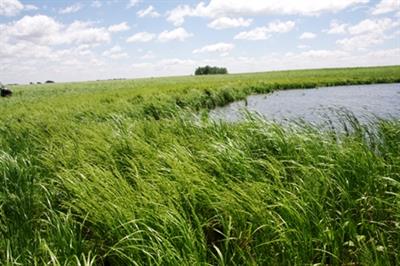 About 40 percent of the continental United States is in agricultural production. In 2017, agriculture in the United States represented nine percent of all carbon emissions when measured by economic sector. However, farmers, ranchers, and forest owners contribute significantly to carbon sequestration efforts through the management and preservation of grasslands, wetlands, and forests. The role private landowners play in carbon sequestration can be dramatically increased by providing incentives for existing and additional conservation programs; encouraging expanded use of conservation practices that address soil health, improve water quality, and provide wildlife habitat in working agricultural landscapes; and establishing new carbon sequestration programs and markets to protect forests, grasslands, wetlands, and other important habitat types.
About 40 percent of the continental United States is in agricultural production. In 2017, agriculture in the United States represented nine percent of all carbon emissions when measured by economic sector. However, farmers, ranchers, and forest owners contribute significantly to carbon sequestration efforts through the management and preservation of grasslands, wetlands, and forests. The role private landowners play in carbon sequestration can be dramatically increased by providing incentives for existing and additional conservation programs; encouraging expanded use of conservation practices that address soil health, improve water quality, and provide wildlife habitat in working agricultural landscapes; and establishing new carbon sequestration programs and markets to protect forests, grasslands, wetlands, and other important habitat types.
Our nation’s agricultural landowners also play a key role in maintaining and conserving healthy riparian corridors with multiple benefits including reduced soil and nutrient runoff into rivers, and shading streambanks to maintain water temperatures for native fish and wildlife. Other opportunities exist to reduce fertilizer inputs and decrease emissions of nitrogen oxide and other byproducts from cropland soils, and to create incentives for producers to capture methane emissions from livestock and agricultural waste supplies, estimated to be one of the top three methane emission contributors in the United States. Creating or expanding voluntary incentives for producers to implement conservation and agricultural practices that reduce greenhouse gas emissions and sequester carbon can also protect and restore fish and wildlife habitat, improve air and water quality, and enhance soil health and productivity.
Forests, Rangelands, and Grasslands
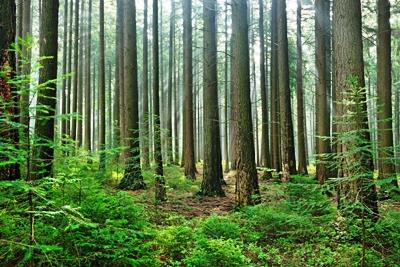 Globally, approximately 2.6 billion tons of carbon dioxide, one-third of the CO2 released from burning fossil fuels, is absorbed by forests every year. Management of forests can influence carbon storage (the total amount of carbon kept out of the atmosphere, generally higher in older stands), carbon sequestration (the amount of carbon removed from the atmosphere in an individual year, generally higher in younger stands), and carbon emissions from extreme wildfire events. In the United States, there are 193 million acres of National Forests and Grasslands managed by the U.S. Forest Service. In the West, expanses of sagebrush ecosystems encompass more than 150 million acres across 14 states. Many of these lands serve as major carbon sinks, but large swaths of rangeland and the national forest and grassland system are in poor condition.
Globally, approximately 2.6 billion tons of carbon dioxide, one-third of the CO2 released from burning fossil fuels, is absorbed by forests every year. Management of forests can influence carbon storage (the total amount of carbon kept out of the atmosphere, generally higher in older stands), carbon sequestration (the amount of carbon removed from the atmosphere in an individual year, generally higher in younger stands), and carbon emissions from extreme wildfire events. In the United States, there are 193 million acres of National Forests and Grasslands managed by the U.S. Forest Service. In the West, expanses of sagebrush ecosystems encompass more than 150 million acres across 14 states. Many of these lands serve as major carbon sinks, but large swaths of rangeland and the national forest and grassland system are in poor condition.
Decades of fire suppression and past management practices on federal lands have left many public forests in poor health, no longer representative of historic vegetation condition, and vulnerable to uncharacteristic wildfire. Poor forest management has the potential to alter carbon storage balance through timber decomposition and their susceptibility to severe wildfires. Forest fires can have both beneficial and negative effects on fish and wildlife that vary in the short and long term, but harmful effects can result in substantial increased sediment loads into water systems and eliminate shade that helps regulate stream temperatures for native fish and wildlife species. With the right programs in place, our nation’s forests have enormous potential to store and sequester more carbon. Ecologically appropriate management and restoration practices should promote diversity of forest stand ages across the landscape, including late and early successional forests that are representative of both short and long-term historical disturbance frequencies. There is no one-size-fits-all forest management strategy, but effective site-specific strategies can range from increasing carbon sequestration through active management that emphasizes reforestation and forest restoration, to stewarding late successional forests with long-term historic disturbance frequencies that store large volumes of carbon in soils and trees. Implementing science-based, landscape appropriate strategies will optimize both the carbon storage and carbon sequestration potential of millions of acres of the nation’s federal forests.
Approximately 360 million acres – or 70 percent – of the working forests in the United States are on private land, which produce almost 90 percent of the supply for forest products while providing critical benefits supporting air quality, water quality, and wildlife habitat. Private working forests already contribute significantly to climate mitigation – with private forest owners growing significantly more wood than they remove. Research has shown that keeping forest land as forests provides the largest carbon sink in the land sector, while conversion from forest land is the largest source of emissions. We can attract more landowners to keep working forests intact and manage them for climate benefits through strong markets and effective market-based incentives. The resulting benefits to the forest will also benefit fish and wildlife habitat, improve water quality and supply, and support climate adaptation and resilience.
Another key to capturing carbon through active forest management is to create and enhance markets for building with wood and long-life wood products, which will encourage both retaining and expanding private forested land and which will store carbon indefinitely. Federal programs to increase and maintain forest health and resilience, establish new and strengthen existing wood markets, and recognize emissions avoided by displacement of more fossil fuel-intensive products with sustainable forest products must be considered as part of the suite of federal policy solutions for climate change. Further, we need to incentivize forest carbon storage and sequestration on private lands and incentivize sustainable forestry on all forested lands.
Similarly, many degraded western rangelands and grasslands lack resistance to change and are converting to invasive monocultures, a condition that is exacerbated further by increased drought and hotter temperatures. Invasive species like cheat grass now dominate many sagebrush landscapes, and have dramatically altered this ecosystem’s productivity, stability, and fire regime. Historically, sagebrush burned about once every 100 years or less, but now fire frequency is once every five to 10 years and with much higher intensity. Over the past two decades, more than 15 million acres of sagebrush – a key habitat type for over 350 species – have been lost to fire. Restoration and conservation of rangelands and grasslands will be an important component of a broad-scale, comprehensive habitat and climate resilience strategy. New opportunities should also be explored for advancing carbon markets for grassland and rangeland conservation.
Oceans
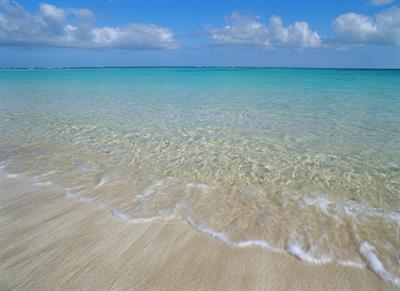 Research has shown the oceans are warming and becoming more acidic as a result of increased atmospheric levels of carbon. Warmer, more acidic ocean water leads to a cascading effect on the marine food web with impacts on marine food resources, as well as marine mammal and fish migration patterns. Climate change effects, such as increased sea temperature and current flows, are shifting the distribution of marine fish stocks, with some species benefiting while others lose out. Pelagic fish including both coastal and oceanic species that often migrate long distances (a broad category encompassing forage fish such as menhaden, prey species such as striped bass, and large migratory species such as tuna) are expected to experience some of the most dramatic shifts. For anadromous species such as salmon, who move from freshwater to the ocean and back, changing food availability may adversely affect their ability to acquire adequate energy stores for use during their migration into freshwater systems to spawn. And for near-shore species such as oysters and other shellfish that are highly vulnerable to ocean acidification, the impacts of climate change have already resulted in dramatic shifts in certain regions, with substantial declines in production and the interconnected value of these species for marine and coastal systems.
Research has shown the oceans are warming and becoming more acidic as a result of increased atmospheric levels of carbon. Warmer, more acidic ocean water leads to a cascading effect on the marine food web with impacts on marine food resources, as well as marine mammal and fish migration patterns. Climate change effects, such as increased sea temperature and current flows, are shifting the distribution of marine fish stocks, with some species benefiting while others lose out. Pelagic fish including both coastal and oceanic species that often migrate long distances (a broad category encompassing forage fish such as menhaden, prey species such as striped bass, and large migratory species such as tuna) are expected to experience some of the most dramatic shifts. For anadromous species such as salmon, who move from freshwater to the ocean and back, changing food availability may adversely affect their ability to acquire adequate energy stores for use during their migration into freshwater systems to spawn. And for near-shore species such as oysters and other shellfish that are highly vulnerable to ocean acidification, the impacts of climate change have already resulted in dramatic shifts in certain regions, with substantial declines in production and the interconnected value of these species for marine and coastal systems.
Healthy oceans need federal climate policy that reduces emissions of greenhouse gases to reduce unnatural rates of ocean warming and acidification, research to understand and help managers account for changes in fish migrations, ranges, and habitat, as well as programs and funding streams to build resilience and ensure coral, near-shore and estuarine systems are able to adapt to a changing climate.
Rivers, Lakes, and Streams
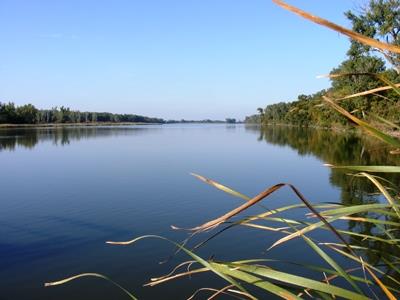 Climate change is fundamentally altering the water cycle, shifting precipitation patterns, and resulting in damaging stream temperature impacts. In many areas, rainfall has become either increasingly abundant or in desperately short supply, relative to longtime averages. To fully grasp the impact this might have on a river or stream, you should start at its literal source. If the high-elevation snowmelt that constitutes the headwaters of many U.S. rivers and streams diminishes because of warming and ever-lessening annual precipitation, the entire watershed begins to dwindle. According to a recent study, the decline in average April 1 snow water equivalent – a common snowpack water measurement – since mid-century is roughly 15–30 percent across the western U.S., comparable in volume to the West’s largest man-made reservoir, Lake Mead.
Climate change is fundamentally altering the water cycle, shifting precipitation patterns, and resulting in damaging stream temperature impacts. In many areas, rainfall has become either increasingly abundant or in desperately short supply, relative to longtime averages. To fully grasp the impact this might have on a river or stream, you should start at its literal source. If the high-elevation snowmelt that constitutes the headwaters of many U.S. rivers and streams diminishes because of warming and ever-lessening annual precipitation, the entire watershed begins to dwindle. According to a recent study, the decline in average April 1 snow water equivalent – a common snowpack water measurement – since mid-century is roughly 15–30 percent across the western U.S., comparable in volume to the West’s largest man-made reservoir, Lake Mead.
In other systems, such as the Mississippi River, changes in precipitation type and timing, along with other factors, have led to too much water, literally drowning communities along the entire stretch of the watershed, which comprises 40 percent of the continental United States. Higher temperatures also cause more frequent algal blooms and reduce dissolved oxygen levels, both of which can cause fish kills and result in significant harm to ecosystems. Like marine fish distributions changing as a result of higher ocean temperatures, we are seeing keystone species such as Eastern brook trout retreat to higher elevations and their distribution moving farther north.
There is great potential for both adaptation and mitigation through natural river restoration. Riparian forests have an underappreciated ability to store carbon, both in vegetation biomass and in soil. Reconnecting and restoring streams and their floodplains can be a productive mitigation action that also reduces water temperature directly. At the federal level, we will need to invest in numerous solutions to build resilient river systems and ensure our lakes, rivers, and streams are able to function as productive carbon sinks while also adapting to climate change. Programs and policies emphasizing water conservation, water efficiency, nutrient reductions, natural infrastructure such as riparian zone protection and restoration, and collaborative, community-based restoration efforts will be critical.
Wetlands
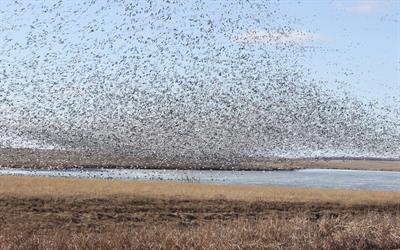 All types of wetlands sequester carbon, from temperate freshwater wetlands, coastal marshes and mangroves to boreal peatlands. Conversely, drainage and degradation of wetlands can release significant amounts of this stored carbon back into the atmosphere in the form of methane and reduce the ability of wetlands to sequester additional carbon. Functioning wetlands also make communities more resilient to the impacts of climate change by providing buffers against sea level rise and storm surges, and reducing the impacts of floods, droughts, and severe storm events. Further, wetlands contribute to clean water and provide critical habitat to myriad fish and wildlife species. Yet, despite all the critical services wetlands provide, 64 percent of the world’s wetlands have been lost in the last century. In the United States, we lost more than half of the nation’s wetlands by the 1980s and every year we are still losing more than 80,000 acres of wetlands. This must change. We need to stop and reverse this trend to ensure wetlands continue to provide multiple benefits to people. Moreover, we need to restore lost wetlands as part of the broader effort in support of using natural infrastructure solutions to meet the nation's flood control, water quality, and carbon sequestration goals.
All types of wetlands sequester carbon, from temperate freshwater wetlands, coastal marshes and mangroves to boreal peatlands. Conversely, drainage and degradation of wetlands can release significant amounts of this stored carbon back into the atmosphere in the form of methane and reduce the ability of wetlands to sequester additional carbon. Functioning wetlands also make communities more resilient to the impacts of climate change by providing buffers against sea level rise and storm surges, and reducing the impacts of floods, droughts, and severe storm events. Further, wetlands contribute to clean water and provide critical habitat to myriad fish and wildlife species. Yet, despite all the critical services wetlands provide, 64 percent of the world’s wetlands have been lost in the last century. In the United States, we lost more than half of the nation’s wetlands by the 1980s and every year we are still losing more than 80,000 acres of wetlands. This must change. We need to stop and reverse this trend to ensure wetlands continue to provide multiple benefits to people. Moreover, we need to restore lost wetlands as part of the broader effort in support of using natural infrastructure solutions to meet the nation's flood control, water quality, and carbon sequestration goals.
Coastal Resiliency
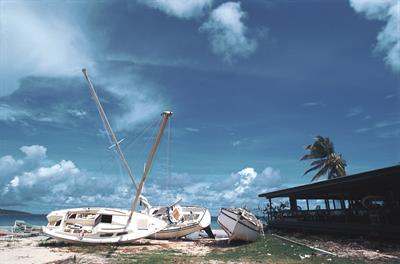 Today, 80 percent of the world’s population lives in coastal areas, making sea level rise and flooding from more frequent, intense storms significant climate-related risks. Coastal wetlands – e.g., marshes, seagrass meadows, and mangroves – sequester billions of tons of carbon from our atmosphere in concentrations up to five times higher than terrestrial forests. Nature-based coastal resilience, including coastal wetlands, barrier islands, mangroves, and oyster reefs, can significantly reduce storm surge and flood damage and save communities billions of dollars when severe hurricanes hit the United States’ coastline. As our climate changes, the conservation and restoration of coastal habitats can help protect millions of people while providing many other benefits such as healthier fisheries, cleaner water, and improved local livelihoods. We need to ensure federal programs and funding sources are in place for coastal communities to identify areas for protection, restoration, and/or management and to develop effective strategies to sustain the natural benefits of coastal habitats. Further, the exploration of new market mechanisms for natural infrastructure solutions for coastal communities will be critical.
Today, 80 percent of the world’s population lives in coastal areas, making sea level rise and flooding from more frequent, intense storms significant climate-related risks. Coastal wetlands – e.g., marshes, seagrass meadows, and mangroves – sequester billions of tons of carbon from our atmosphere in concentrations up to five times higher than terrestrial forests. Nature-based coastal resilience, including coastal wetlands, barrier islands, mangroves, and oyster reefs, can significantly reduce storm surge and flood damage and save communities billions of dollars when severe hurricanes hit the United States’ coastline. As our climate changes, the conservation and restoration of coastal habitats can help protect millions of people while providing many other benefits such as healthier fisheries, cleaner water, and improved local livelihoods. We need to ensure federal programs and funding sources are in place for coastal communities to identify areas for protection, restoration, and/or management and to develop effective strategies to sustain the natural benefits of coastal habitats. Further, the exploration of new market mechanisms for natural infrastructure solutions for coastal communities will be critical.
Adaptation
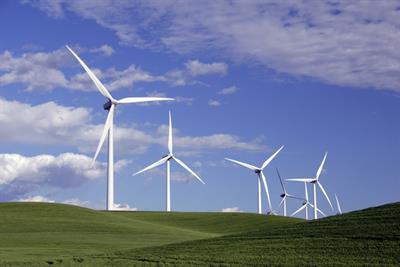 Even with significant emissions reductions and investments in carbon sequestration, the climate will continue to get warmer, which means humans, fish, and wildlife will need to adapt to those changes. Federal policy can help this process by connecting climate adaptation efforts with existing conservation programs and investing in new policies and projects that allow fish and wildlife to move, such as by improving fish passage, maintaining biologically sufficient streamflows, and conserving migration corridors and stopover habitats for big game, waterfowl, fish, and many other species. Adaptive solutions will need to be science-driven and include multiple stakeholders focused on conserving intact, resilient natural systems and restoring degraded landscapes.
Even with significant emissions reductions and investments in carbon sequestration, the climate will continue to get warmer, which means humans, fish, and wildlife will need to adapt to those changes. Federal policy can help this process by connecting climate adaptation efforts with existing conservation programs and investing in new policies and projects that allow fish and wildlife to move, such as by improving fish passage, maintaining biologically sufficient streamflows, and conserving migration corridors and stopover habitats for big game, waterfowl, fish, and many other species. Adaptive solutions will need to be science-driven and include multiple stakeholders focused on conserving intact, resilient natural systems and restoring degraded landscapes.
In addition, the National Fish, Wildlife, and Plants Climate Adaptation Strategy is essential for ensuring state and federal land and wildlife management agencies have the tools and resources necessary to respond to the unique impacts and challenges faced at the landscape scale. Federal agencies should encourage effective, efficient implementation of the Adaptation Strategy through policies that enable interagency communication, coordination, and collaboration. Finally, the Joint Implementation Working Group, a partnership initiated in 2013 between the Department of the Interior, U.S. Fish and Wildlife Service, Natural Resources Conservation Service, National Oceanic and Atmospheric Administration, U.S. Forest Service, and the Association of Fish and Wildlife Agencies, should be re-established and formalized in comprehensive federal climate policy.
Summary
Sportsmen and women strongly believe we need to recognize the role natural systems will play both in carbon sequestration and emissions reductions, as well as in building adaptation and resilience as we confront the impacts of climate change. Policymakers must also recognize the vital role the agriculture and forestry sectors, including America’s private landowners, will play in driving on-the-ground solutions to reach our nation’s carbon reduction targets and adaptation objectives.
More than 100 years ago, our nation’s first conservation laws were driven forward by sportsmen and women. As we witness the changes around us today, we commit to being on the frontlines of the policy solutions for propelling our nation forward into a new era of reduced carbon emissions, minimized land and water degradation, expanded restoration efforts, enhanced resiliency, and sustainable communities. Comprehensive climate strategies will benefit fish and wildlife, the habitats that support them, and the people and communities that depend upon healthy ecosystems.